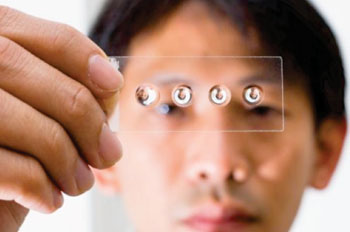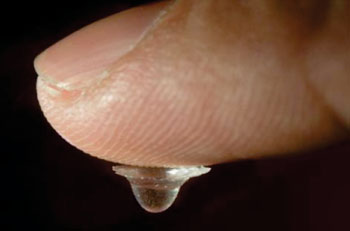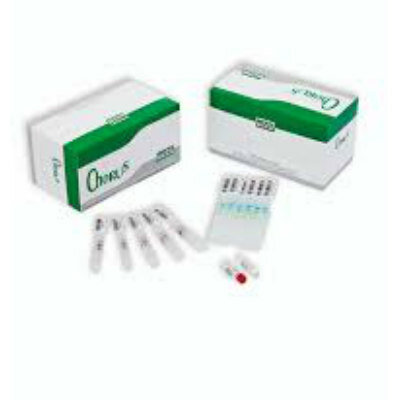Penny Contact Lenses Created from Clear Liquid
By LabMedica International staff writers
Posted on 07 May 2014
One droplet of clear liquid can bend light, acting as a lens. Now, by utilizing this well-known phenomenon, researchers have developed a new process to create inexpensive, high quality lenses that should cost less than USD 0.01 apiece.Posted on 07 May 2014
Because the lenses being so inexpensive, they can be used in a variety of applications, including tools to detect diseases in the field, scientific research in the lab and optical lenses and microscopes for education in classrooms.
“What I’m really excited about is that it opens up lens fabrication technology,” stated Dr. Steve Lee from the Research School of Engineering at the Australian National University (ANU; Canberra, Australia) of the new technique, which he and his colleagues described in an article published April 24, 2014, in the Optical Society’s (OSA) open-access journal Biomedical Optics Express.
Many conventional lenses are made the same way lenses have been made since Isaac Newton’s day—by grinding and polishing a flat disk of glass into a specific curved shape. Others are produced with more sophisticated methods, such as pouring gel-like materials molds. But both approaches can be costly and complicated, according to Dr. Lee. With the new technology, the researchers harvest solid lenses of differing focal lengths by suspending and curing droplets of a gel-like material—a simple and inexpensive approach that avoids costly or complicated machinery. “What I did was to systematically fine-tune the curvature that’s formed by a simple droplet with the help of gravity, and without any molds,” he explained.
Although scientists have long known that a droplet can act as a lens, no one tried to see how good a lens it could be. Now, the team has developed a process that pushes this idea to its limits, according to the researchers. All that is required is an oven, a microscope glass slide, and a common, gel-like silicone polymer called polydimethylsiloxane (PDMS). First, a small amount of PDMS is dropped onto the slide. Then, it is baked at 70 °C to harden it, creating a base. Then, another squirt of PDMS is dropped onto the base and the slide is flipped over. Gravity pulls the new droplet down into a parabolic shape. The droplet is baked again to solidify the lens. More drops can then be added to hone the shape of the lens that also greatly increases the imaging quality of the lens. “It’s a low cost and easy lens-making recipe,” Dr. Lee said.
The researchers made lenses about a few millimeters thick with a magnification power of 160 times and a resolution of about 4 micrometers—two times lower in optical resolution than many commercial microscopes, but more than three orders of magnitude lower in cost. “We’re quite surprised at the magnification enhancement using such a simple process,” he noted.
Their low cost--low enough to make them disposable--allows for a variety of uses. In particular, the researchers have constructed a lens attachment that converts a smartphone camera into a dermascope, a tool to diagnose skin diseases such as melanoma. Whereas common dermascopes can cost USD 500 or more, the phone version costs approximately USD 2. The new dermascope, which was made using a three-dimensional (3D) printer and is designed for use in rural areas or developing countries, is slated to be commercially available in just a few months, according to Dr. Lee. A similar smartphone-based tool can also help farmers identify pests out in their fields.
Dr. Lee also foresees that the lenses could be used in the lab as implantable lenses that biologists can use to study cells in vivo. The high cost of conventional lenses usually dissuades scientists from implanting them into mice, he reported. The lenses would also be suitable for hobbyists or as part of low cost mobile microscopes that can be distributed to children and others for educational or outreach purposes, he added. “Simple optics can be very powerful.”
So far, the researchers cannot make lenses much bigger than half an inch in diameter. But to expand the range of applications, the investigators are now fine-tuning the process to make lenses as large as two inches and increasing the lens’s optical performance.
Related Links:
Australian National University















